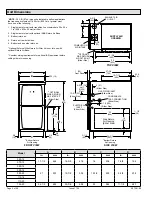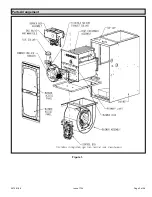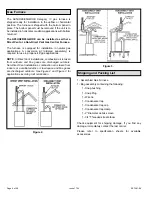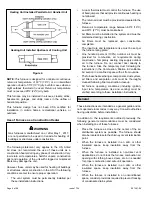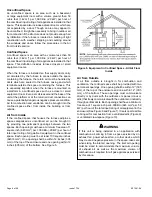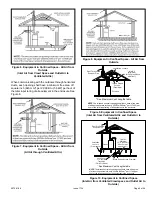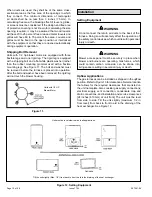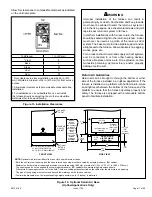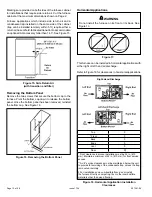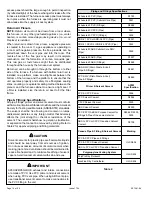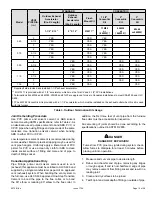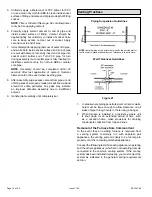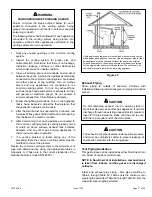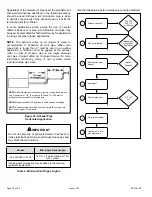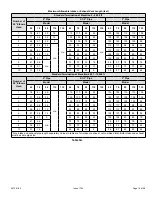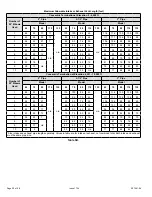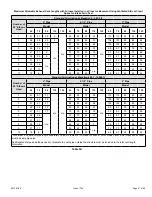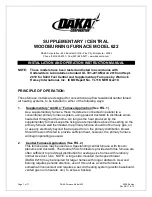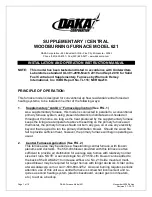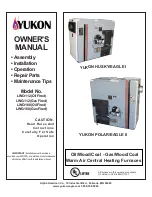
507281-06
Page 6 of 58
Issue 1724
Figure 4.
Heating Unit Installed Parallel to Air Handler Unit
Heating Unit Installed Upstream of Cooling Unit
NOTE
:
This furnace is designed for a minimum continuous
return air temperature of 60°F (16°C) or an intermittent
operation down to 55°F (13°C) dry bulb for cases where a
night setback thermostat is used. Return air temperature
must not exceed 85°F (29°C) dry bulb.
This furnace may be installed in alcoves, closets, attics,
basements, garages, and utility rooms in the upflow or
horizontal position.
This furnace design has not been CSA certified for
installation in mobile homes, recreational vehicles, or
outdoors.
Use of Furnace as a Construction Heater
Gas furnaces manufactured on or after May 1, 2017,
are not permitted to be used in Canada for heating of
buildings or structures under construction.
WARNING
The following statement only applies to the US. Allied
Air does not recommend the use of these units as a
construction heater during any phase of construction. Very
low return air temperatures, harmful vapors, construction
dust and operation of the unit with clogged or misplaced
filters may damage the unit.
However, these units may be used for heating of buildings
or structures under construction in the US if the following
conditions are met to ensure proper operation:
•
The vent system must be permanently installed per
these installation instructions.
General
These instructions are intended as a general guide and do
not supersede local codes in any way. Consult authorities
having jurisdiction before installation.
In addition to the requirements outlined previously, the
following general recommendations must be considered
when installing one of these furnaces:
•
Place the furnace as close to the center of the air
distribution system as possible. The furnace should
also be located close to the chimney or vent termination
point.
•
When the furnace is installed in an attic or other
insulated space, keep insulation away from the
furnace.
•
When the furnace is installed in non-direct vent
applications, do not block the furnace combustion air
opening with clothing, boxes, doors, etc. Air is needed
for proper combustion and safe unit operation.
•
When the furnace is installed in an attic or other
insulated space, keep insulation away from the
furnace.
•
When the furnace is installed in an unconditioned
space, consider provisions required to prevent freezing
of condensate drain system.
•
A room thermostat must control the furnace. The use
of fixed jumpers that will provide continuous heating is
not allowed.
•
The return air duct must be provided and sealed to the
furnace.
•
Return air temperature range between 60°F (16°C)
and 80°F (27°C) must be maintained.
•
Air filters must be installed in the system and must be
maintained during construction.
•
Air filters must be replaced upon construction
completion.
•
The input rate and temperature rise must be set per
the furnace rating plate.
•
One hundred percent (100%) outdoor air must be
provided for combustion air requirements during
construction. Temporary ducting may supply outdoor
air to the furnace. Do not connect duct directly to
the furnace. Size the temporary duct following the
instructions in the Combustion, Dilution & Ventilation
Air section in a confined space with air from outside.
•
The furnace heat exchanger, components, duct system,
air filters and evaporator coils must be thoroughly
cleaned following final construction cleanup.
•
All furnace operating conditions (including ignition,
input rate, temperature rise and venting) must be
verified according to these installation instructions.


